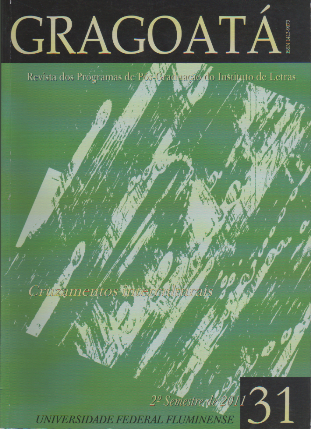Dialogues and “Tombeaux”: H. Campos, N. Perlongher and S. Sarduy
DOI:
https://doi.org/10.22409/gragoata.v16i31.33064Keywords:
dialogue, poetry, concretism, neo-baroqueAbstract
Following the line of comparative literary studies, this article aims at discussing the intertextual dialogue that Brazilian writer Haroldo de Campos established with the Argentine author Néstor Perlongher and the Cuban author Severo Sarduy. For that, it performs a reflection on the recurring use of the typology of the “tombeau -poem” into Campo’s oeuvre. It also investigates its connection with the issues of death and allegory, as well as the productivity of notions like inheritance and tribute for the studies on modern and contemporary poetry. This preliminary research intends to bring up some interesting questions for rethinking the development of Neo-Baroque aesthetics, in the broader context of Latin America, motivated by cross-cultural dimensions which the “politics of friendship” are able to achieve nowadays, providing exchanges between poets of different origins and interrelating diverse formal strategies and policy, especially relevant to the historical scenario of recent decades.
Downloads
Downloads
Published
How to Cite
Issue
Section
License
Authors who publish in Gragoatá agree to the following terms:
The authors retain the rights and give the journal the right to the first publication, simultaneously subject to a Creative Commons license CC-BY-NC 4.0, which allows sharing by third parties with due mention to the author and the first publication by Gragoatá.
Authors may enter into additional and separate contractual arrangements for the non-exclusive distribution of the published version of the work (for example, posting it in an institutional repository or publishing it in a book), with recognition of its initial publication in Gragoatá.

Gragoatá is licensed under a Creative Commons - Attribution-NonCommercial 4.0 International.











